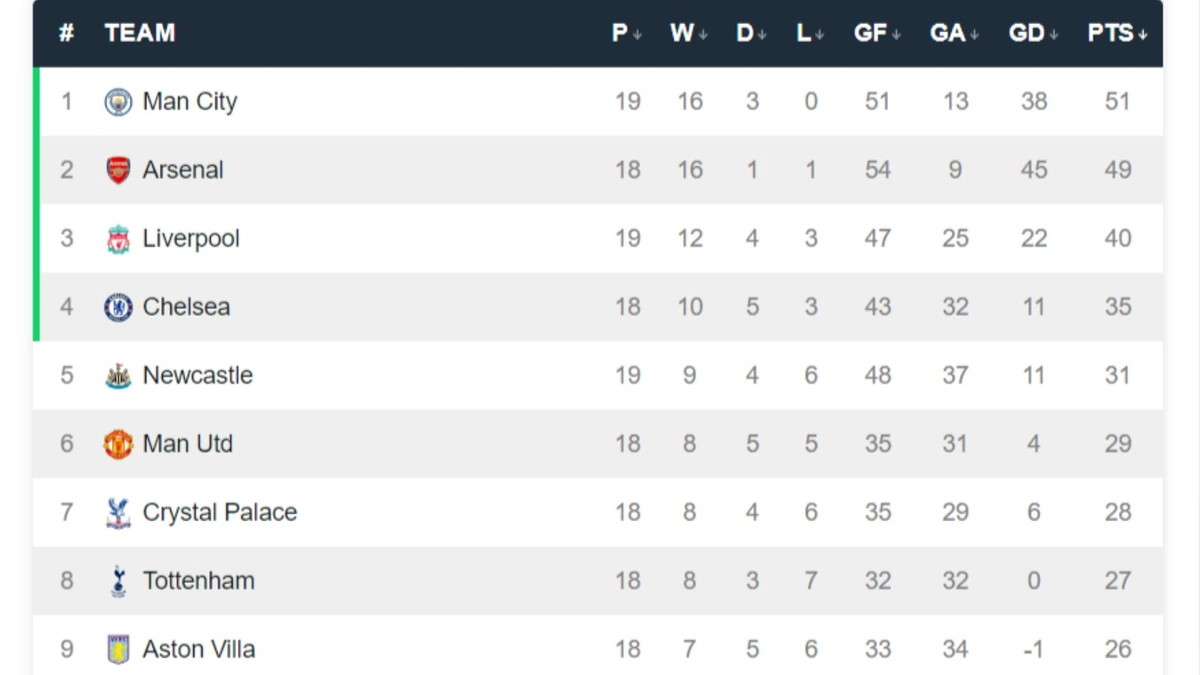Decoding the PL Table | More Than Just Numbers – It’s a Chess Game!
Alright, let’s be honest. When you hear “PL Table,” your eyes might glaze over. Profit and Loss statements can feel like a financial deep dive you didn’t sign up for. But here’s the thing: a PL table isn’t just a dry document filled with numbers; it’s a snapshot of a company’s entire operation, a story told in revenue, expenses, and ultimately, profit. Think of it as a financial chessboard, and understanding it is the key to making smart moves.
Why Should You Even Care About a PL Table?

So, why bother deciphering this seemingly complex table? Because it tells you whether a business is making money, losing money, or just breaking even. It’s that simple. But it’s also much more. It helps you understand profitability analysis . A PL table is vital for businesses, investors, and even employees who want to understand the financial health of their company. If you’re thinking about investing in a company, the PL table is one of the first things you should scrutinize. It can reveal whether the company is consistently profitable, whether its costs are under control, and how its performance compares to its competitors. If you’re an employee, understanding the PL table can give you insight into the company’s stability and growth prospects – factors that directly impact your career.
It’s not rocket science, but it does require a bit of understanding. And that’s what we’re here to do – break it down, bit by bit.
Understanding the Core Components
A typical PL table has several key components. Let’s look at them, one by one. First, there’s revenue – the total amount of money a company brings in from its sales or services. Then comes the cost of goods sold (COGS) – the direct costs associated with producing those goods or services. Subtracting COGS from revenue gives you the gross profit – a crucial indicator of how efficiently a company is producing its goods or services. Next, you’ll see operating expenses – the costs associated with running the business, such as salaries, rent, and marketing. Subtracting operating expenses from gross profit gives you the operating income – a measure of how profitable the company is from its core operations. Finally, you’ll find non-operating income and expenses – such as interest income, interest expense, and gains or losses from investments. Adding non-operating income and subtracting non-operating expenses from operating income gives you the net income – the bottom line, or the company’s profit after all expenses have been paid. This number is the true measure of profitability and the one everyone looks for immediately.
Decoding the Numbers | A Real-World Example
Let’s imagine a small online store selling handmade jewelry. In a given year, they generate ₹5,00,000 in revenue. Their cost of goods sold (materials, labor) is ₹2,00,000. That means their gross profit is ₹3,00,000. But, they also have operating expenses – rent for a small workshop (₹50,000), marketing costs (₹30,000), and salaries (₹70,000), totaling ₹1,50,000. Their operating income is therefore ₹1,50,000. Now, let’s say they have some interest income from a small investment (₹10,000). Their net income before taxes would be ₹1,60,000. This simple example illustrates how the PL table works in practice and how each component contributes to the final net income figure.
See? Not so scary, right?
Common Mistakes and How to Avoid Them
One common mistake is focusing solely on the net income without looking at the underlying components. A high net income might be masking inefficiencies in operations or unsustainable cost-cutting measures. Another mistake is not comparing the PL table to previous periods or to industry benchmarks. This can give you a sense of whether the company is improving, declining, or simply keeping pace with its competitors. Also, watch out for one-time gains or losses that can distort the picture. For instance, a company might sell off an asset for a large profit in one year, but that’s not necessarily indicative of its ongoing profitability. Always look for trends and patterns rather than focusing on isolated data points. Another common issue is overlooking the importance of financial statement analysis . Proper analysis of a PL table requires comparing it with other financial statements.
The PL Table and Your Investments
So, how does all this relate to your investments? Well, a company’s PL table can be a powerful tool for assessing its financial health and potential. Look for companies with consistent revenue growth, healthy gross profit margins, and well-managed operating expenses. Be wary of companies with declining revenue, shrinking margins, or rapidly increasing debt. Remember, the PL table is just one piece of the puzzle. It’s essential to consider other factors, such as the company’s industry, competitive landscape, and management team before making any investment decisions. But, a solid understanding of the PL table will give you a significant edge in evaluating investment opportunities. Think of it as your financial superpower.
Want a little more context? Let’s check out this internal link to Chelsea vs Benfica timeline .
Frequently Asked Questions
What’s the difference between gross profit and net profit?
Gross profit is revenue minus the cost of goods sold. Net profit is what’s left after all expenses, including operating expenses, interest, and taxes, are deducted.
How often should a PL table be reviewed?
Ideally, a PL table should be reviewed monthly or quarterly to monitor performance and identify any potential issues early on.
What if a company has a net loss?
A net loss means the company’s expenses exceeded its revenue. This could be due to various factors, such as declining sales, increasing costs, or one-time expenses. It’s essential to investigate the reasons behind the loss and assess whether the company has a plan to return to profitability.
Where can I find PL tables for publicly traded companies?
PL tables for publicly traded companies are available in their quarterly and annual reports, which can be found on their investor relations websites or on the website of the Securities and Exchange Board of India (SEBI).
Can a PL table be manipulated?
Yes, companies can manipulate their PL tables through accounting tricks, such as recognizing revenue prematurely or delaying the recognition of expenses. That’s why it’s crucial to scrutinize the numbers and look for any red flags.
In conclusion, the PL table is a powerful tool for understanding a company’s financial performance. By understanding its core components, avoiding common mistakes, and relating it to your investments, you can make more informed decisions and increase your chances of success. So next time you see a PL table, don’t shy away. Embrace it, analyze it, and let it guide you on your financial journey. Want to check out something else to get you thinking? Here is a good internal link: UGA vs ZIM
Remember, it is important to consult with a financial advisor before making any investment decisions. As per SEBI’s guidelines , individual investors should be wary of unsolicited investment advice and verify the credentials of any financial advisor.













